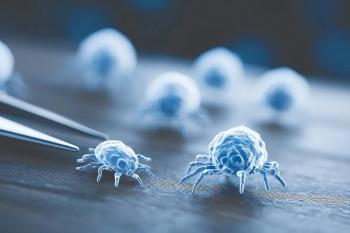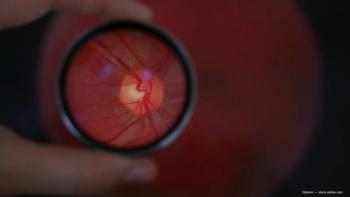
Initial results good for wavefront-guided Epi-Lift treatments, more work needed
Washington, DC — Early results of a study evaluating wavefront-guided customized treatment using the Epi-Lift technique indicate that the Gebauer EpiTome (VisiJet/Advanced Refractive Technologies) works well to separate the corneal epithelium. However, there has been significant interpatient variability so far in the level of postoperative comfort, speed of visual recovery, and time to removal of the therapeutic soft contact lens, reported Terrence P. O'Brien, MD, at the American Society of Cataract and Refractive Surgery meeting.
April 17 - Washington, DC - Early results of a study evaluating wavefront-guided customized treatment using the Epi-Lift technique indicate that the Gebauer EpiTome (VisiJet/Advanced Refractive Technologies) works well to separate the corneal epithelium.
However, there has been significant interpatient variability so far in the level of postoperative comfort, speed of visual recovery, and time to removal of the therapeutic soft contact lens, reported Terrence P. O'Brien, MD, at the American Society of Cataract and Refractive Surgery meeting.
Dr. O'Brien and colleagues at Wilmer Eye Institute studied an initial safety cohort comprised of 26 eyes of 13 patients and a subsequent efficacy cohort including 24 eyes of 12 subjects. All were myopes targeted for emmetropia. They had a mean MRSE preoperatively of -6.04 D.
The ablation was performed with the CustomVue platform (VISX) using a 6-mm optical zone and 8-mm ablation zone. Preoperatively, patients were treated with oral vitamin C beginning 1 week prior to surgery. Perioperatively, they received topical anesthetic, povidione-iodine, and a fourth-generation fluoroquinolone. Two eyes with higher myopia were treated with intraoperative mitomycin-C.
After surgery, all patients received a therapeutic soft contact lens (TSCL) with an 8.9 D base curve, and they continued on vitamin C, the antibiotic, a nonpreserved nonsteroidal anti-inflammatory drug, a corticosteroid, and oral ibuprofen.
The preliminary results showed excellent large diameter, complete epithelial flaps were produced in 24 eyes. Two eyes-one with an incomplete partial epithelial flap and a second eye with a smaller diameter flap-were converted to PRK.
The average time to TSCL removal was 4.1 days, but ranged from 36 hours to 7.2 days. The average pain score was 2.3 on a scale of 0 to 4, and four patients needed systemic narcotics. There was little to no haze.
UCVA at day 1 averaged 20/50 and ranged from 20/25 to 20/200. The average UCVA at the time of TSCL removal was 20/30, and among patients seen at 3 months, 72% saw 20/20 or better. Results from 16 eyes that underwent wavefront evaluation at 3 months showed a slight trend toward less total RMS and less spherical aberration compared with historical controls that underwent CustomVue myopic LASIK, Dr. O'Brien reported.
"In these procedures we will have to be able to control pain, have rapid visual rehabilitation, and prevent formation of haze. Therefore, I think we need to work together to figure out safe and effective pharmaceutical regimens to help accelerate patient recovery with comfort," Dr. O'Brien said.
Newsletter
Don’t miss out—get Ophthalmology Times updates on the latest clinical advancements and expert interviews, straight to your inbox.









































